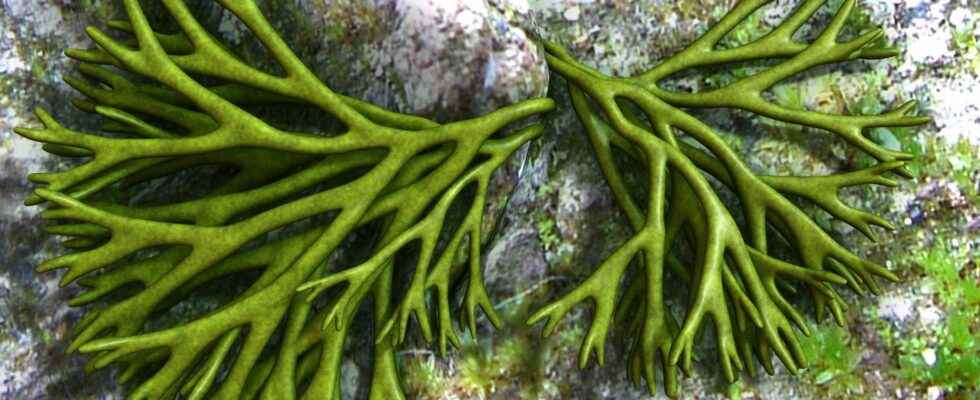Thallophytes are plants consisting of a single thallus: they have no stem, root, leaves or flower. The plant kingdom is thus divided into thallophytes (algae, mushroomslichens, mosses…) and cormophytes (bryophytes, pteridophytes and spermatophytes). The former are usually small, even single-celled, while corm plants are more complex, with varying tissues and shapes.
Thallus structure
Thallophytes can be microscopic or gigantic : some algae Marines such as kelp can thus measure up to 70 m in length! The thallus can be tubular, ribbon-shaped, blade-shaped, fan-shaped (sea lettuce) or even filamentous, as in the mushroom where the thallus is made up of a tangle of filaments called mycelium.
In unicellular algae or yeasts, the thallus consists of a single cell. In more evolved species such as sargassum, the thallus has a very complex structure, with ramifications reminiscent of ferns. The difference is at the microscopic level, the thallus having no vascular tissue for example.
Thallophyte ecology
Thanks to their diversity, thallophytes colonize a wide variety of environments (rocks, tree trunks, seabed, etc.) or evolve in open water (phytoplankton). Due to their reduced size and their flattened or filamentous structure, the thalli offer a large exchange surface with their environment. This allows the plant to take as many resources as possible (ions, minerals, gas…) and maximize the photosynthesis. But it also makes them very sensitive environmental conditions (water temperature, salinitypollution…)
Life cycle of thallophytes
To reproduce, thallophyte organisms can either produce spores or gametes, or duplicate by vegetative propagation. In red algae or green algae of the genus Caulerpa, the thallus is thus broken and carried away by the sea currents to give birth to a new plant. The green algae of the kind Valonia form small cysts which bud to give birth to “thalli-son”.
You will also be interested
[EN VIDÉO] Biodiversity on Earth: history of the concept and origins of life What is biodiversity ? Biologist Gilles Bœuf explains this concept to us and shows us how it allows us to understand the complexity of life on earth. From isolated cells in its beginnings four billion years ago, it has diversified to take very diverse forms and come out of the ocean. A feat for organisms like us, which are essentially made of water…
Interested in what you just read?
